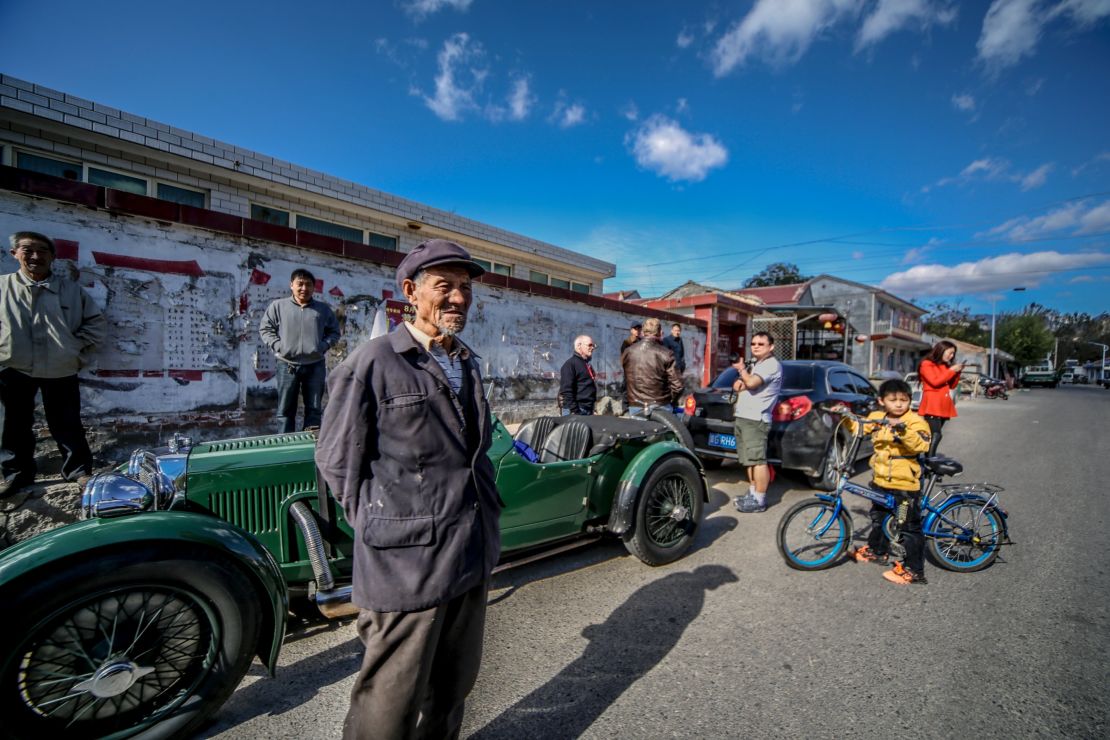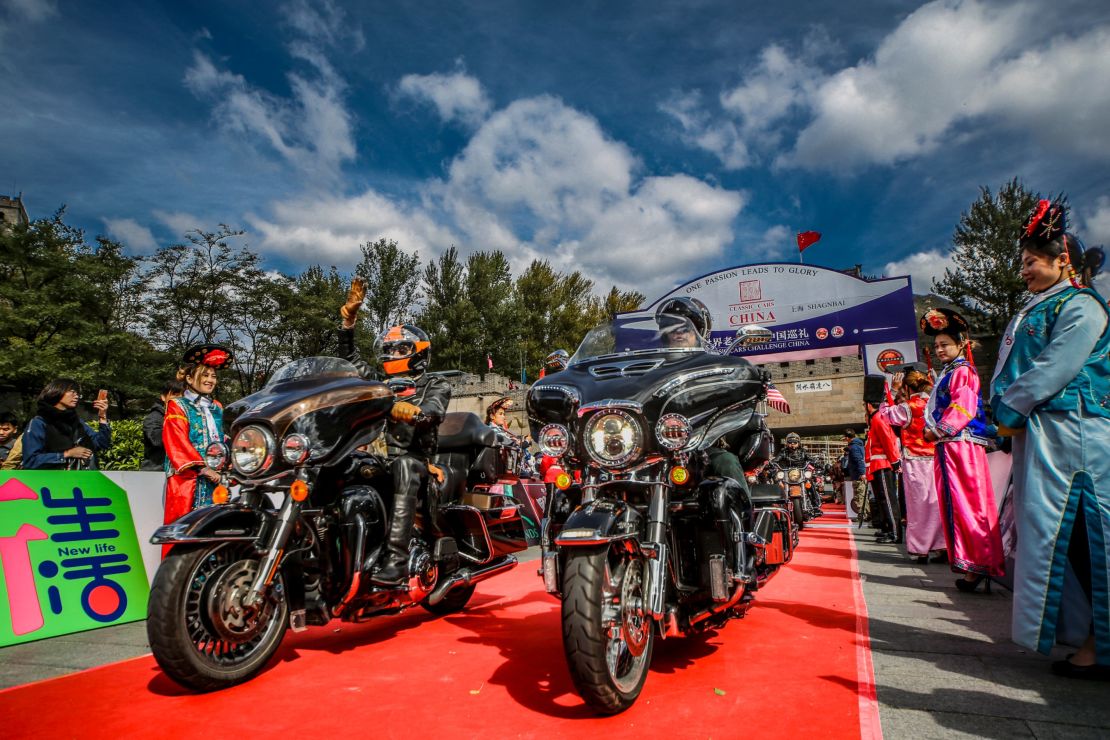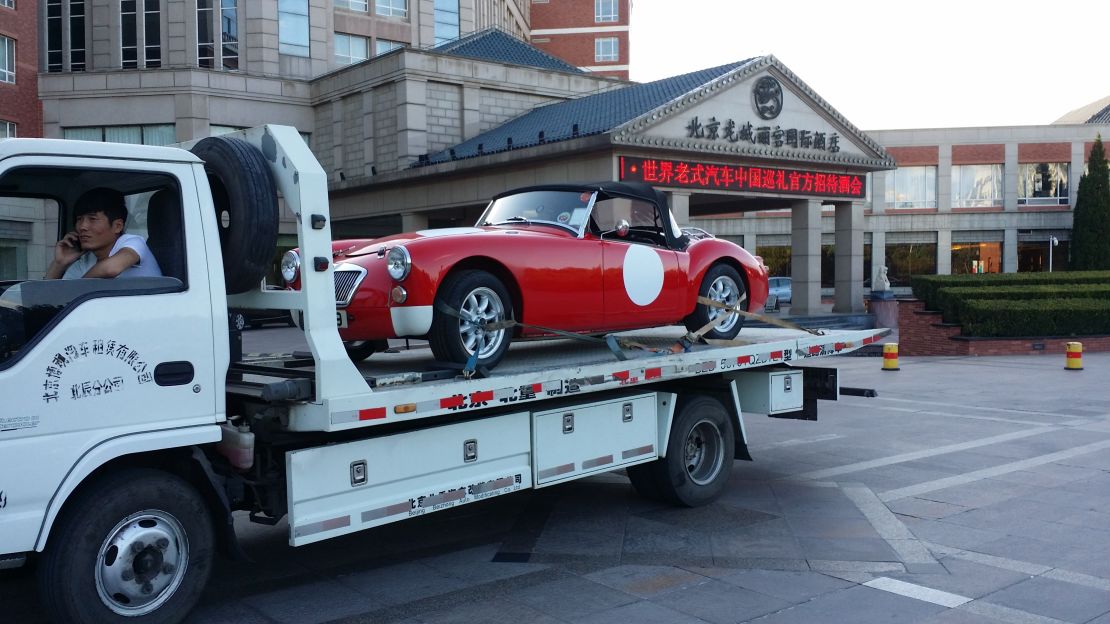Story highlights
51 classic cars from 26 countries rally from Beijing to Shanghai
Existing Chinese regulations ban old cars from roads
Two Belgian drivers document their trip in gallery above
Journey provides unusual snapshot of China's urbanization
It is extremely rare to see an Aston Martin DB2 on the road. It’s even rarer to see one on the road, in rural China, surrounded by a herd of goats. Manufactured from 1950 to 1953 in Warwickshire, England, only 411 models were ever produced. Famed for its design and relatively advanced straight-6 racing engine, the DB2 can today fetch as high as $500,000 dollars at auction.
The DB2’s visit to the Chinese countryside was part of October’s Classic Car Challenge China (also known as 4C), an annual event that sees participants travel from Beijing to Shanghai on a 1,200-km, 10-day journey.
Classic cars drive from Beijing to Shanghai
Now in its fifth year, the rally has grown in size, attracting participants from across the world. This month, 51 different classic cars from 26 countries were on display, including a 1929 Rolls Royce Phantom 1 and a 1930 Ford Model A.
But, as Lei Xing, chief editor of China Automotive Review, one of China’s top selling auto-industry publications explains, the event is something of an oddity – and not only because of the rarity of the cars on show.

“Officially, Chinese law doesn’t allow the import of used cars, which by definition, includes classic cars,” says Lei. “But there are ways to get around the law… if you have the right connections.” The measure, part of a wider government ban that also restricts vehicles that have driven more than 600,000km from entering onto the road, is intended to help curb pollution.
Rally complications
There were other logistical difficulties too, says Zong Guian, the executive chairman of Classic Vehicle Union of China (CVUC), the creator and co-organizer of the event. “Putting on a rally like this requires strong business and a lot of financial support, but there’s still a lack of understanding and appreciation for these sort of events in the country.”
This lack of understanding led Tianjin port customs officials to refuse entry to some classic cars, including a 1911 Knox Raceabout, shipped in from Holland – and much to the owner’s frustration.

Other complications facing organizers included getting foreign drivers licensed, registering old vehicles for use on the road, paying import deposits (which can exceed the value of the car itself) and gaining approval from local governments that oversee the dozens of towns, cities and villages along the route. No easy task.
An unusual snapshot of China’s urbanization
For Belgian driver Frederic Goblet, simply seeing China up close made all the efforts worth it: “If you work in the finance industry, like I do, you hear about growth, you hear about the bubble, about urbanization. But to see what urbanization looks like, first-hand, is fascinating.”
Goblet, who along with his driving partner, Denis de Wagheneire, had flown in from Brussels especially for the rally, documented their trip for Classic Car Passion, a forum dedicated to “classic car addicts.”
Their photos, featured in the gallery above, capture the more nuanced scenes of China’s development: endless rows of corn (which, in 2013, surpassed rice as the country’s primary crop), newly built roads that have meant greater connectivity for smaller cities, and expansive construction works in empty cities.
So what’s driving events such as these?
Growing appetite for classics
Keith Martin, the vice chairman of The Classic Car Club of Hong Kong, has witnessed China’s growing appetite for classic cars up close. Martin, who arranged the shipping of 11 classic cars from Hong Kong to attend the rally, believes rallies such as the Classic Car Challenge China can help spur the creation of a viable market into the future.

“Before, it would be a tourist company or a hotel that would want to hire a dozen fancy cars to attract the public,” says Martin, of the more base-level, aesthetic interest in the cars. “If you put one of these cars in the street, within five minutes, 100 people will show up. The draw for these cars are phenomenal, because people have never seen them.”
“But now, we’re seeing more business entities in China inviting classic cars into the country. Classic cars are big money – you’re talking about some cars worth several million US dollars. What these business people are hoping, I think, is that more Chinese people can begin to take an interest in, and ultimately buy these cars. That’s the money incentive.”
A piece of China’s automotive history

Among China’s growing number of classic car collectors is York Wong. Wong, who is from Hong Kong, is the owner of a 1959 Hongqi CA72 saloon by FAW Automotive, a luxury Chinese marque. The original Honqi models were reserved for China’s high-ranking elite.
“The Hongqi car represents the real glory of China, at a time when it was completely sealed off during the Korean War. No industrial materials, equipment or technology was allowed in. But despite this, China still managed to manufacture a 100% domestically made car.”
Wong says he hopes China’s policy makers will one day allow older cars to be regularly driven on roads, in designated areas and during certain time periods.
“In the absence of supportive government policies, these vintage cars are not licensed for driving and are therefore forced into retirement. China has now become a leading automotive manufacturer and seller in the world. But without (the inclusion of) classic cars, it’s difficult for the local automotive industry to nurture a new generation of car enthusiasts.”












































